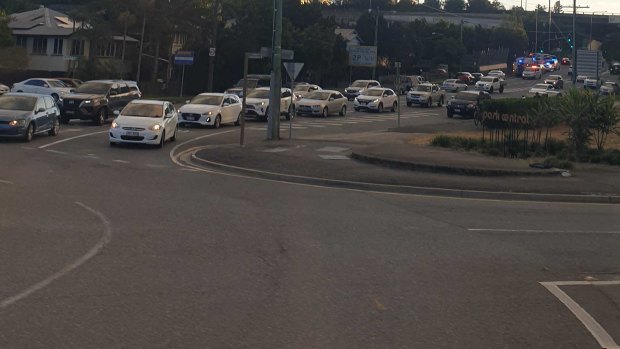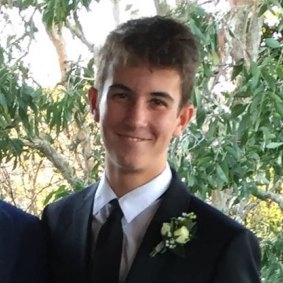‘Lost too soon’: How two green lights and a bus’s blind spot led to tragedy
By Cloe Read
After the death of a cyclist who was struck by a council bus, a coroner has recommended Brisbane City Council and the Transport Department review all the metro area’s traffic lights for safer red arrow signalling.
On Thursday, Coroner Donald MacKenzie handed down his inquest findings into the death of 20-year-old Max McDowall, who was fatally struck by a council bus in 2021.
The bus and McDowall had been given a green light simultaneously as they entered the intersection of O’Keefe and Gillingham streets in Woolloongabba.

The scene of the fatal accident in Woolloongabba.Credit: Fairfax Media
McDowall, said by his family to have been a cautious cyclist, suffered critical injuries and died at the scene, near Buranda train station.
Bus driver Andrew Rudnicki had been turning left into the South East Busway, which runs along the Pacific Motorway.
A bus driver since 1988, Rudnicki had driven the 61 City Glider route hundreds of times.

Max McDowall’s family said he was an experienced and cautious cyclist.Credit: Facebook
He was originally charged over the accident, but prosecutors dropped the case.
McDowall was on his way to Queensland University of Technology, a route he travelled regularly.
“Max was obviously a cherished young man who was lost to his family too soon,” MacKenzie said.
“His death has brought to attention a dangerous problem for pedestrians and bicycle safety at Brisbane intersections.”
The coroner identified multiple causes of the crash, and said both McDowall and Rudnicki had been compliant with road rules.
Stark blind spots along the bus prevented Rudnicki seeing McDowall as he entered the intersection, MacKenzie said, and the traffic light sequencing had given them both a green light at the same time.
Police told the inquest while McDowall was in the best position to spot the potential danger and take evasive action, Rudnicki had been in a give-way position at the time.
MacKenzie recommended a review of every intersection in the Brisbane metropolitan area, with a view to eventually prioritising the installation of red arrows, for vehicles crossing pedestrian lanes that have a green man light.
He said Brisbane’s road network consisted of 5700 kilometres of road, with more than 1000 signalised intersections.
MacKenzie referred to comments made by a Brisbane City Council planning manager, who told the court all governments were constrained by budgets.
“I agree with this observation, but we are dealing with human lives,” MacKenzie said.
He also recommended the council install camera mirrors in all its fleet. He noted 110 buses had the cameras at present, which reduced blind spots for drivers, and there was an ongoing program funded by Translink for a further 270 buses.
“With a total 1265 buses in the Brisbane City Council fleet, an extension of the current funding will be required to ensure all buses have camera mirrors installed,” he said.
MacKenzie also recommended changes to training for bus drivers and incident reports.
He said improving the signalling at intersections, which had already been done at O’Keefe and Gillingham streets, would prevent another tragedy.
“Max’s legacy will be the heightened awareness of this road traffic issue with cyclists and pedestrians, and the installation of such traffic design systems.”
Start the day with a summary of the day’s most important and interesting stories, analysis and insights. Sign up for our Morning Edition newsletter.